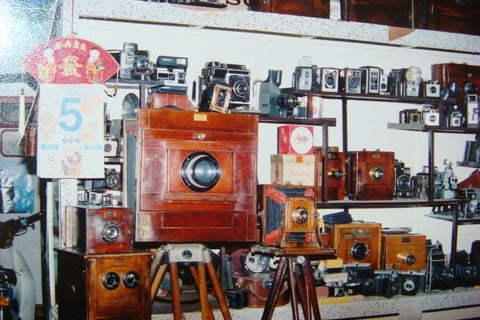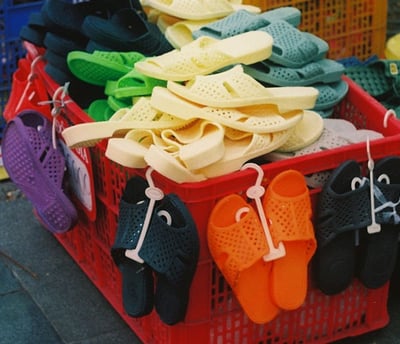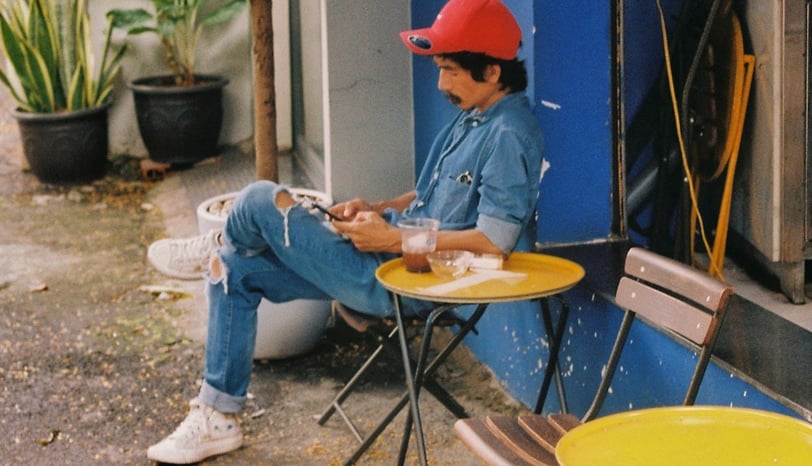Saigon On Film: All About Film Photography
The birth of film photography can be traced back to the early 19th century. While the pioneers like Joseph Nicéphore Niépce and Louis Daguerre experimented with capturing images on metal plates, it was the introduction of film that revolutionized photography. The first flexible photographic film was invented by Richard Leach Maddox in 1871. This breakthrough paved the way for handheld cameras and made photography accessible to a wider audience.

Check This Great Video About History Of Photography
What Were the First Film Types?
Early photographic films were primarily black and white, sensitive to blue and ultraviolet light. They required long exposure times and were highly susceptible to light leaks. However, advancements in chemistry led to the development of more sensitive films, allowing for shorter exposure times and capturing a wider spectrum of light. Color photography emerged in the early 20th century with processes like Autochrome, which used tiny starch grains dyed in primary colors. Later, color negative and slide films became more popular, offering vibrant and accurate color reproduction.
By 1913 color film get so popular that Lumière factory producing 6,000 autochrome plates every day.


Learn More About Film Photography History From Our Recent Article


History Of Color Photo Film
The evolution of color photography from hand-colored prints to digital marvels has been marked by innovation and perseverance. Key milestones include Maxwell's color synthesis experiment, the Autochrome process, and the development of integral tripack films like Kodachrome.
How to Shoot on Film?
Shooting on film is a unique experience that requires careful consideration. Here’s a basic guide:
Choose Your Camera and Film: Select a camera that suits your style and budget. Film types vary in speed, color, and format. Research different options to find the best match for your photography goals.
Load the Film: This process requires careful handling to avoid light leaks. Refer to your camera's manual for specific instructions.
Exposure Settings: Film photography relies on manual exposure settings. Understanding aperture, shutter speed, and ISO is crucial. Experiment with different settings to achieve desired results.
Composing Your Shot: Take your time to frame your image. Consider the rule of thirds, leading lines, and other compositional elements.
Metering: Use a light meter or rely on your camera's built-in meter to determine correct exposure.
Shooting: Press the shutter button gently to avoid camera shake.
Film Development: Once the film is exposed, it needs to be developed to reveal the images.
How to Develop Film and Which Methods Exist Today?
Film development is a chemical process that converts the latent image on the film into a visible image. Traditionally, this was done in darkrooms using tanks and chemicals. Today, several methods are available:
Traditional Darkroom Development: This method offers complete control over the development process but requires specialized equipment and knowledge.
Mail-in Development Labs: Many labs offer film development and scanning services, making it convenient for photographers.
Home Development Kits: These kits provide the necessary chemicals and equipment for developing film at home.
Black and white film photography, with its timeless aesthetic and unique artistic expression, continues to captivate photographers worldwide. This comprehensive guide will delve into the fundamental principles, techniques, and creative approaches that will enable you to harness the power of monochrome photography.
Your First Black and White Roll of Film:
Ilford HP5+ or Kodak Tri-X are excellent choices for beginners due to their versatility and forgiving nature.
Film For Labs That Only Develop Color Film:
Ilford XP2 is a black and white film that can be developed in color film chemistry, making it convenient for those who only have access to color labs.
Classic Black and White Film Look:
Ilford HP5 pushed to 800, Kodak Tri-X, Fomapan, or Delta 3200 pulled can create a classic, timeless look.
Archival Quality:
JCH Streetpan 400, Bergger Pancro 400, Agfa films, and Rollei films are known for their archival qualities, making them suitable for long-term preservation.
For Everyday Snapshots:
Kentmere 100/400 or Fomapan are affordable options for everyday photography.
Street Photography:
Tri-X or JCH Streetpan 400 are popular choices for street photography due to their versatility and ability to capture candid moments.
Low Light:
Ilford Delta 3200 is a high-speed film designed for low-light photography.
Portraiture:
Delta 100/400 or Ortho 80 are suitable for portrait photography due to their fine grain and smooth tonality.
Landscape:
SFX 200 is a popular choice for landscape photography due to its wide exposure latitude and ability to capture fine details.
Sharpest/Finest Grain:
Delta/T-Max films are known for their sharpness and fine grain.
Widest Exposure Latitude:
Ilford XP2 offers a wide exposure latitude, making it forgiving of overexposure or underexposure.
Push/Pull Flexibility:
Ilford HP5+ is a versatile film that can be pushed to higher ISO speeds or pulled to lower ISO speeds for creative effects.
How to choose black & white film?
The choice of black and white film can significantly impact the look and feel of your images. Here are some recommendations based on different shooting scenarios:
Choosing the Right Black and White Film
Analog Spirit Today: Color, Composition, Vibe
Film photography has experienced a resurgence in recent years. People are drawn to the unique aesthetic, tactile experience, and slower pace of film. The analog spirit is characterized by:
Rich Colors: Film often produces vibrant and saturated colors with a distinct look.
Intentional Composition: Photographers tend to be more deliberate in framing their shots.
Unpredictability: Film photography offers surprises, adding to the charm of the process.
Nostalgia: Many people appreciate the nostalgic feel of film photographs.
About Polaroid
Polaroid photography is a special category of instant film photography. Polaroid cameras produce physical prints almost immediately after taking a picture. While Polaroid stopped producing instant film in 2008, several companies now offer instant film alternatives. Polaroid's iconic square format and instant gratification continue to inspire photographers.
Most Famous Photographers Shooting on Film
Many renowned photographers have embraced film photography throughout their careers. Some notable examples include:
Henri Cartier-Bresson: A master of street photography, known for his decisive moment.
Ansel Adams: Famous for his breathtaking landscape photographs, particularly of the American West.
Steve McCurry: Renowned for his iconic images, including the Afghan Girl.
Saul Leiter: A visionary photographer whose work is characterized by its dreamlike quality.
Vivian Maier: A self-taught street photographer whose work was discovered posthumously.
Why Should I Try Film Photography?
Film photography offers a unique and rewarding experience. Here are some reasons to give it a try:
Creative Expression: Film photography allows for greater control over the creative process.
Appreciation for Photography: Slowing down and focusing on composition enhances your photographic skills.
Unique Aesthetic: Film photographs have a distinct look and feel that sets them apart.
Tangible Results: Holding a physical print in your hands is a satisfying experience.
Community: Joining the film photography community can be inspiring and supportive.
Saigon on Film
Saigon, with its vibrant culture and bustling streets, is a perfect city to explore through the lens of a film camera. The city's character and atmosphere are beautifully captured on film, offering a timeless perspective. Whether you're shooting black and white or color, Saigon will undoubtedly provide endless opportunities for stunning photographs.


